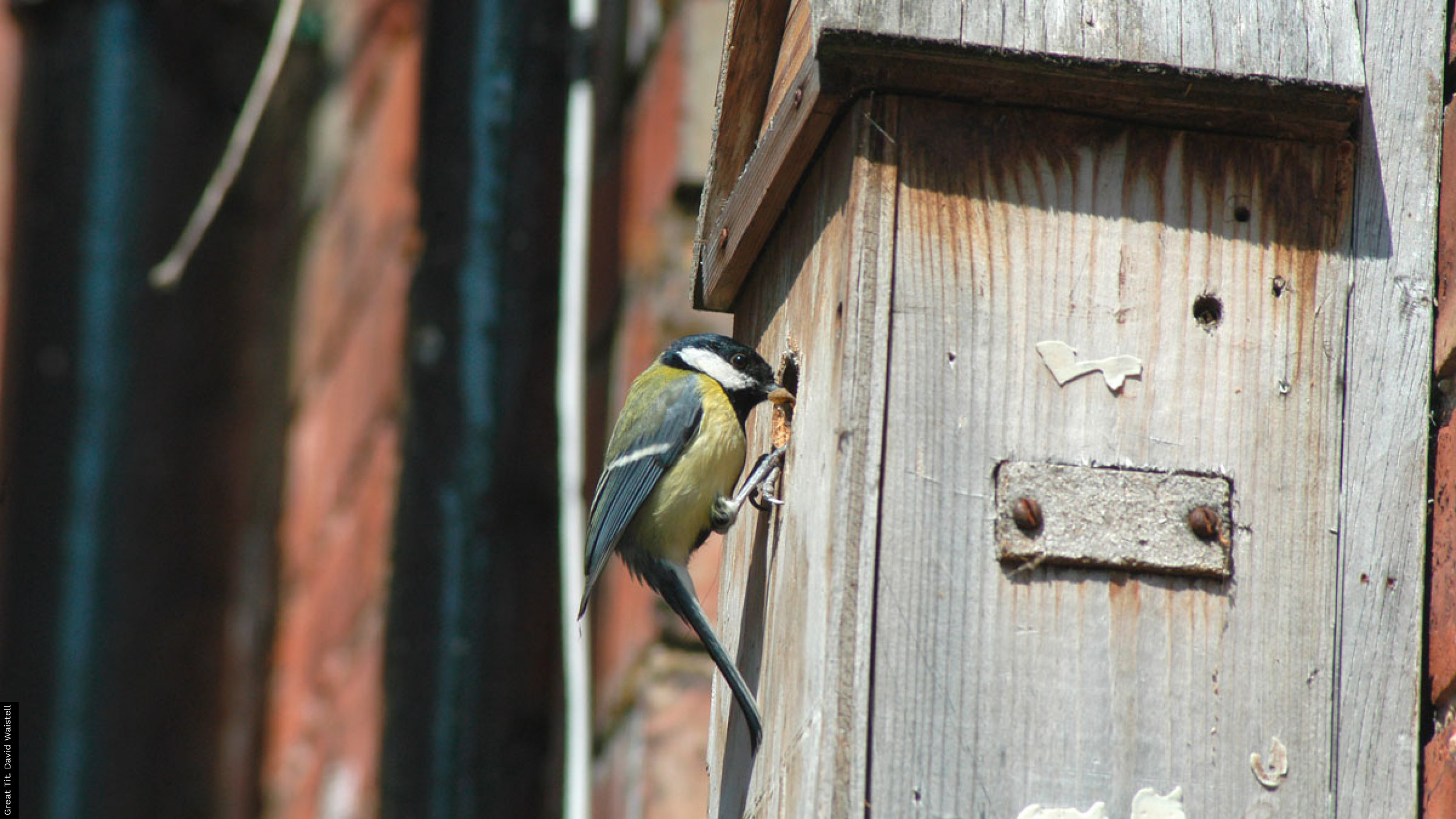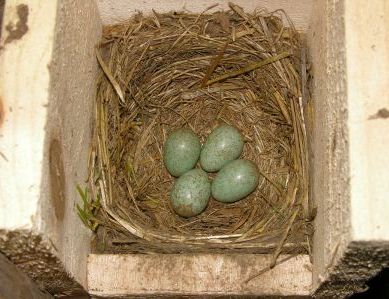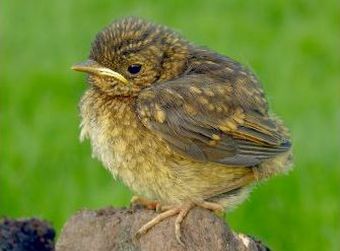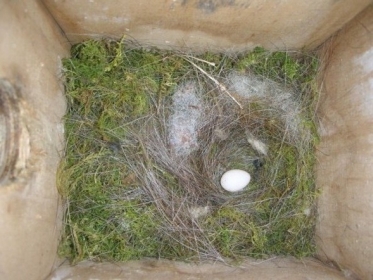NBC 2011 season report
After an unexpected warm spell at the beginning of October, gardens are finally turning ‘Autumnal’ as leaves take on their orange and red tints, Starlings their winter spots, and Jays and other birds reappear busily foraging. The breeding season may be over for common garden birds—the last NBC record was a Collared Dove with one chick on 25th September in Greater Manchester—but even now there is activity elsewhere. Little Grebes can be seen chasing away soon-to-be-independent young on ponds and rivers, and BTO nest recorders are still reporting Barn Owls tending second broods.
Participation in 2011
like the one above. Photo: Richard Castell.
Many thanks to the 1,370 of you who monitored over 3,900 nest sites in gardens and green spaces across the country this year. Data were collected for an amazing 39 different species in a variety of artificial and natural nest sites.
Nest box occupants
As expected, most of the boxes registered for NBC were of the garden 'small hole' variety and Blue Tits and Great Tits were the most common occupants, being reported in 1,775 boxes. House Sparrows were seen in a further 284 small hole boxes and Tree Sparrows in 88 boxes. Coal Tits, Starlings, Nuthatches, Pied Flycatchers and Redstarts were also reported. Plenty of 'open-fronted' nest boxes were registered for NBC too, being used mostly by Robins and Blackbirds, but with Spotted Flycatchers, Redstarts and Wrens also taking them up.
It was great to see larger nest boxes being monitored, accompanied by larger residents, including nesting Stock Doves, Jackdaws, Kestrels, Tawny Owls and even three pairs of Mallard and a pair of Mandarin. Two Little Owl nests were monitored in boxes in Greater London and Oxfordshire, both fledging young.
boxes, shrubs and other 'nooks and crannies'. Photo: Richard Castell.
Of course, not everything followed the rules when it came to typical nest box designs: there were reports of Blue Tits and Great Tits in Dormouse boxes, House Sparrows in Swift boxes and an obligatory pair of Jackdaws nesting in a Tawny Owl box.
Not just boxes
Alongside nest boxes, NBC recorders did an excellent job of looking out for nests in trees, shrubs and nooks and crannies in buildings. Over 100 Blackbird, 20 Robin and 20 Dunnock nests were found and monitored this year, along with nests of Chaffinch, Goldfinch, Bullfinch, Song Thrush, Mistle Thrush, Magpie, Great Spotted Woodpecker, Pied Wagtail and a Grey Wagtail nest in an old fire extinguisher! Swallow, House Martin and Swift nests were followed too, despite being at heights difficult to observe. The last reported Swallow clutch hatched on the 24th August in North Yorkshire, with the chicks fledging by the 22nd September.
NBC results for Blue Tit and Great Tit
A great thing about NBC is that the results maps are updated automatically as people log their observations online, thereby providing a live summary of what’s going on in nest boxes as the season progresses. But those aren’t the only results produced using NBC data. At the end of each breeding season, we take all the records submitted to NBC and BTO surveys such as the Nest Record Scheme and compare them with data from previous years in order to keep track of how bird breeding performance changes over time. The resulting trends are published each year on the 'BirdTrends' section of the BTO website.
According to the last breeding season report, 2010 was a good season for both Blue Tit and Great Tit, with clutch and brood sizes significantly higher than the average for the previous 5 years. The latest NBC data suggests 2011 was about the same, with average clutch size for Blue Tit being slightly down on 2009/2010 and Great Tit average clutch size remaining high (see Figures 1 & 2). The past three summers, then, have seen a run of higher clutch and brood sizes for the two most common nest box species, perhaps a consequence of those years having warmer and drier April-May periods than average.
NBC figures also suggest that Great Tits have been laying progressively earlier over the past five years (see Figure 3), which is consistent with the long-term trend for this species. The average first laying date for Blue Tit has advanced by over a week since 1968, according to the BTO’s BirdTrends Report.
Thank you to all participants
To find out how other garden nesting species fared in 2011, keep a lookout for the Nest Record Scheme’s online provisional report, due in November, which pulls together all the latest data for the season.
Thank you to all Nest Box Challenge supporters; we hope you enjoyed taking part this year. If you have nest boxes to clean out this winter, please see here for guidance.
NBC Team
October 2011











Share this page